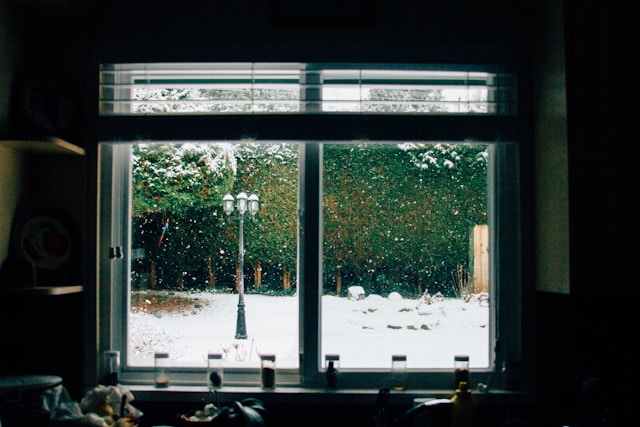As temperatures drop and winter storms roll in, ensuring your home is ready for the cold is more than just a comfort it’s a necessity. Learning how to weatherproof your home can help you stay warm, reduce heating costs, and prevent costly damage from snow, ice, and freezing temperatures.
Whether you’re a homeowner preparing for a tough season or a renter looking to stay cozy on a budget, this comprehensive guide will walk you through how to winterize your house effectively and affordably.
Why Weatherproofing Your Home Matters
When the cold sets in, your home becomes your primary defense against the elements. Without proper preparation, cold air can seep in, warm air can escape, and your heating bills can soar. More seriously, unprotected pipes can freeze and burst, roofs can leak, and small drafts can turn into major discomforts.
Taking the time now to complete your winter home maintenance checklist can lead to:
-
Lower energy bills
-
Increased home comfort
-
Prevention of structural damage
-
Improved energy efficiency
-
Peace of mind during winter storms
Let’s dive into practical steps you can take to weatherproof your home this winter.
1. Seal Doors and Windows
One of the easiest and most effective ways to keep the cold out is by sealing up the gaps where air leaks in.
How to Check for Drafts:
-
Light a candle or incense stick and move it slowly around the edges of doors and windows.
-
If the flame flickers or smoke moves horizontally, there’s likely a draft.
Draft-Proofing Tips:
-
Apply weatherstripping around doors and movable window parts
-
Use caulk to seal gaps or cracks around stationary window frames
-
Install door sweeps at the base of exterior doors
-
For single-pane windows, apply window insulation film or use thermal curtains to retain heat
Properly sealing windows for winter can significantly reduce heat loss and make your home more energy-efficient.
2. Insulate Key Areas
Heat tends to escape through poorly insulated areas like attics, basements, and crawl spaces. Improving insulation is one of the best home insulation for winter strategies.
Areas to Focus On:
-
Attic: Ensure at least 10–14 inches of insulation; install baffles for proper airflow
-
Basement and crawl spaces: Use foam board or spray foam insulation
-
Pipes: Wrap exposed plumbing with pipe insulation sleeves to prevent freezing
-
Floors and walls: Add rugs to floors and consider insulated wall panels for cold-prone rooms
Insulation not only keeps you warm but also reduces strain on your heating system.
3. Check Heating Systems
Your heating system is the heart of your winter comfort. Now’s the time to make sure it’s working efficiently and safely.
Furnace & Heating Checklist:
-
Replace furnace filters (do this every 1–3 months during winter)
-
Schedule a professional inspection or tune-up
-
Clean vents and ensure they’re not blocked
-
Check carbon monoxide detectors near heating systems
-
If you use a fireplace, have your chimney cleaned and inspected
For electric or portable space heaters, follow manufacturer guidelines and never leave them unattended.
4. Protect Your Plumbing
Frozen pipes are one of the most common and costly winter home issues. Preventing this starts with simple precautions.
How to Protect Pipes from Freezing:
-
Insulate pipes in attics, garages, basements, and exterior walls
-
Disconnect and drain garden hoses
-
Cover outdoor spigots with insulated covers
-
Know where your main shutoff valve is in case of a burst
-
During extreme cold, allow faucets to drip slowly to keep water moving
If you’re away from home, keeping your thermostat set to at least 55°F can prevent freezing.
5. Prepare the Exterior
Winter weather can wreak havoc on your home’s exterior if you’re not careful. Don’t overlook these important tasks.
Exterior Winter Prep List:
-
Clean gutters and downspouts to prevent ice dams
-
Check your roof for missing shingles or damage
-
Trim tree branches that could fall during a storm
-
Seal foundation cracks with waterproof caulk
-
Bring in outdoor furniture, hoses, and garden tools
-
Cover AC units and protect outdoor faucets
These steps not only protect your home but also make spring maintenance much easier.
6. Consider Energy-Efficiency Upgrades
Small upgrades can make a big difference when it comes to reducing heating costs and improving long-term comfort.
Popular Upgrades:
-
Smart thermostats like Nest or Ecobee optimize energy use
-
Install energy-efficient windows or apply insulating window film
-
Upgrade to LED lighting to reduce energy usage in darker months
-
Add insulated outlet covers to prevent cold air intrusion
These changes can qualify you for energy rebates in some areas, so check with your local utility provider.
7. Winter Emergency Preparedness
Even with the best prep, winter storms can cause power outages and emergencies. Be ready with the essentials.
Winter Emergency Kit:
-
Flashlights with extra batteries
-
Warm blankets and sleeping bags
-
Non-perishable food and bottled water
-
First-aid kit and necessary medications
-
Backup heat source (e.g., wood stove, propane heater)
-
Snow shovel and ice melt for walkways
Preventing ice dams on the roof and having a plan for extended outages adds another layer of protection for your family.
Conclusion
Learning how to weatherproof your home for winter isn’t just about comfort it’s about safety, savings, and long-term peace of mind. From sealing windows to checking your furnace and insulating pipes, each task on your winter home checklist contributes to a warmer, more energy-efficient space.
The best time to start winterizing is before the cold hits. A weekend of preparation now can save you hundreds on heating and repairs later.

